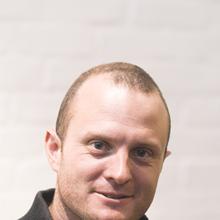Expertise from Southampton helping archaeologists around the world

Over the years, Southampton’s archaeologists have developed considerable expertise in a wide range of technologies. Kristian Strutt heads the University’s Archaeological Prospection Services and is in demand around the world to help with a wide range of projects. Non-invasive techniques help archaeologists learn more about underground conditions without the expense and disruption of excavations.
Angus Graham of the Egypt Exploration Society engaged Kristian to carry out geophysics work on the site of ancient Thebes on the Nile near Karnak, including the enormous basins known today as Birket Habu and Birket Luxor. The University of Southampton’s Electrical Resistivity Tomography (ERT) equipment has revealed evidence of channels that may have fed Birket Habu. “This is sophisticated kit, and essential for us as we wanted to gain an understanding of the geomorphological origins of the site of Karnak,” says Angus. Magnetometry was also used to map features near the surface and there are plans to use Ground Penetrating Radar in future years.
Kristian has worked on the Egyptian site of Antinoupolis with archaeologists from the University of Florence. The city was founded by the Roman Emperor Hadrian on his imperial tour of Egypt in October of 130AD. Earlier remains on the site include a temple from about 1250BC from the reign of Ramses II. There is much potential for archaeologists in the site which is larger than 300 acres. Jay Heidel from The Antinoupolis Foundation in Chicago, which is funding this project for the University of Florence team, says Kristian’s expertise in helping map the city using a range of non-invasive techniques was extremely valuable and he hopes to commission more technological support in future years.
Work has also taken place in Sharjah in the United Arab Emirates. Sharjah’s ruler, His Highness Sheikh Sultan bin Mohammed Al-Qasimi is himself a published historian and is keen to discover more about the development of his country through its archaeology.
In Sharjah, Kristian and colleagues have explored the historic city centre adjoining Sharjah Creek and discovered the foundations of buildings from the 19th and early 20th centuries preserved beneath the tarmac. They have also carried out a ground survey of Al Khan, a coastal village. “I hope these surveys are just the start of our collaborations,” says Peter Jackson, architect to the government of Sharjah. “We enjoyed working with Kristian and his team and are now able to plan the physical excavations of these sites.”
It is hoped to arrange placements and opportunities for postgraduate Archaeology students at Southampton on some of these projects in future years.
